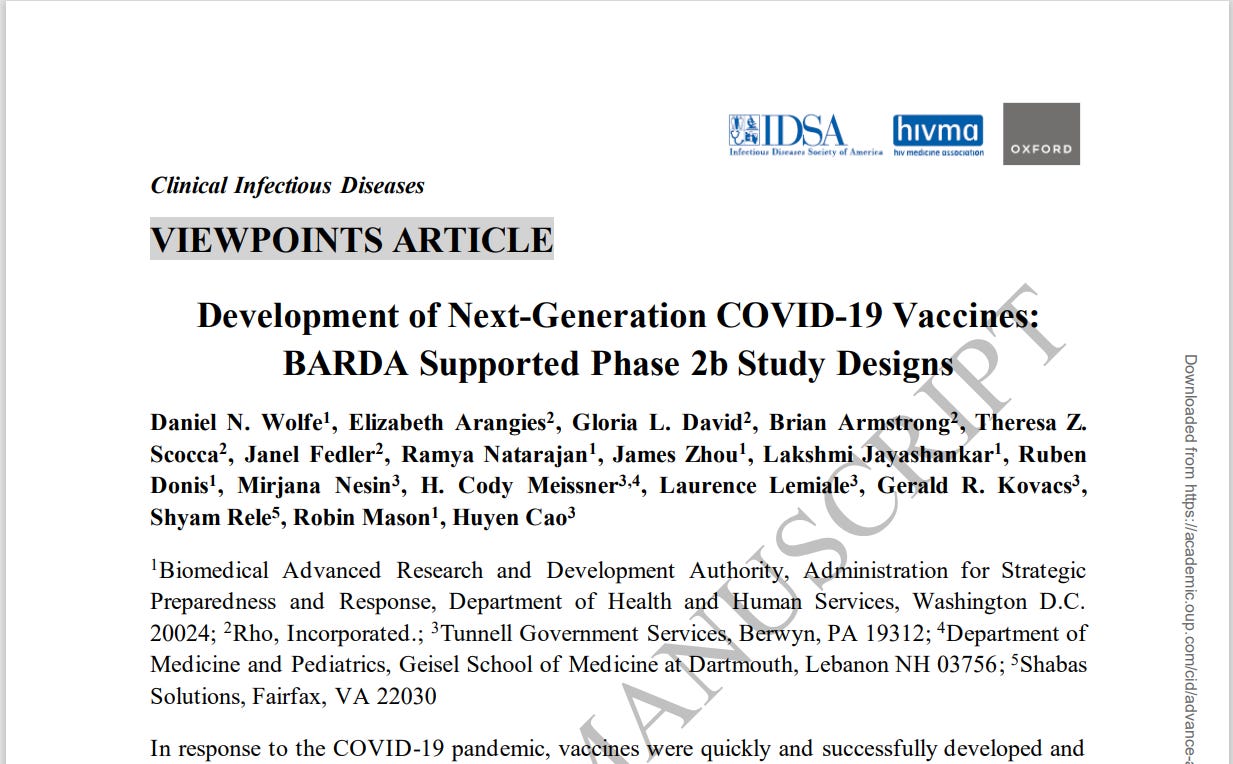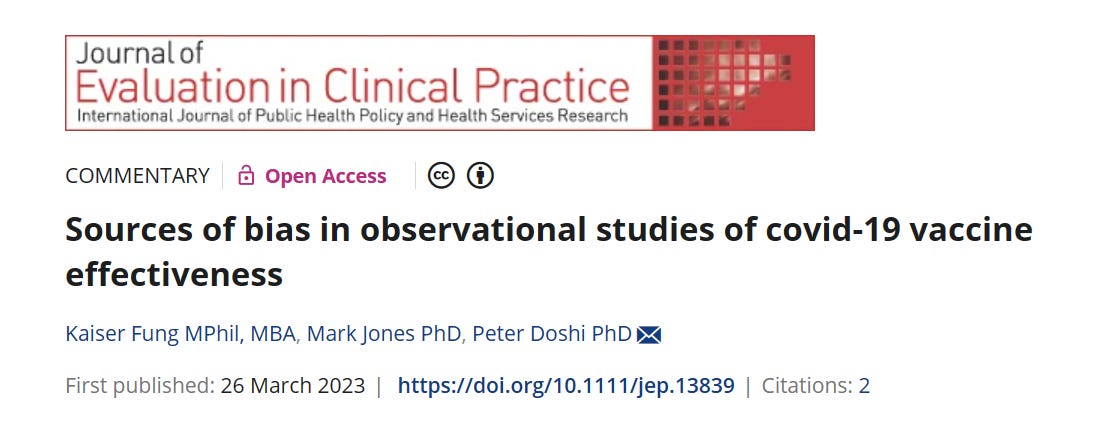A Critique of HHS's "Development of Next-Generation COVID-19 Vaccines: BARDA Supported Phase 2b Study Designs" (Clinical Infectious Diseases)
Formal critique provided free-of-charge to the US Government by IPAK
The proposed “BARDA-supported Phase 2b study design for next-generation COVID-19 vaccines” suffers from likely biases in estimating vaccine efficacy and underestimating the risk of serious adverse events (SAEs). This critique addresses these concerns comprehensively, highlighting specific areas for improvement to ensure a more accurate and reliable assessment of vaccine performance.
The Lyons-Weiler/Fenton Effect
One of the primary concerns is the potential for overestimating vaccine efficacy due to the delayed definition of vaccination status. In the current study design, individuals are only considered vaccinated 14 days post-vaccination. This introduces the Lyons-Weiler/Fenton effect, which results in the exclusion of COVID-19 cases that occur before this period. Such an approach can artificially inflate the perceived efficacy of the vaccine, as early cases are not counted. To address this, including all COVID-19 cases from the moment the first dose is administered is crucial. This would provide a more accurate representation of the vaccine’s efficacy, accounting for any early failures that might occur.
The study's comparison with currently approved vaccines as comparators, specifically mentioning Pfizer and Moderna COVID-19 vaccines, is problematic. These vaccines suffering from waning efficacy. This further complicates the assessment of the new vaccine's performance. The use of a comparator with low or negative baseline efficacy will cause the study to overestimate the comparative benefits of the new vaccine to no vaccine. This can lead to overestimating the relative efficacy improvements, especially if the comparator vaccines have negative efficacy (they do). To mitigate this, the study design could incorporate a saline placebo group, which is 100% necessary to provide a clear baseline against which the new vaccine’s efficacy can be measured. This would be required to differentiate the actual benefits of the new vaccine without the confounding influence of an already effective comparator.
Another significant issue is the potential underestimation of SAEs due to short-term adverse event monitoring. The study monitors solicited adverse events for seven days and unsolicited events for 30 days post-vaccination. However, this limited timeframe may not capture all relevant adverse events, particularly those that manifest later. The first vaccines suffered from the flaw of combined Phase 2/3 phases, aborting the ability to detect a more complete list of solicited adverse events. Extending the monitoring period for solicited and unsolicited adverse events is essential to gather comprehensive safety data. Including long-term safety outcomes in the study design would ensure that any delayed adverse events are identified and evaluated.
The exclusion criteria of the study also present a bias, as participants with unstable illnesses or those taking immunosuppressants are not included. This exclusion skews the safety data, as these individuals might have different adverse event profiles. To provide a more accurate assessment of the vaccine's safety across the broader population, it is vital to include high-risk individuals in the study. This would help in understanding how the vaccine performs in diverse groups and ensure that the safety profile reflects real-world conditions. Otherwise, the commercial roll-out will suffer from translational failure.
Additionally, the study's reliance on a Poisson distribution model to account for rare adverse events is insufficient. This approach may lead to the underreporting of SAEs, particularly those that are rare but severe. Alternative statistical methods or study designs that can better capture rare adverse events should be considered to provide a more robust safety profile.
Incorporating a plan for long-term, recurring animal studies is crucial to test for Antibody-Dependent Enhancement (ADE). The initial assessment of ADE using only the Wuhan-1 virus challenge to Wuhan-1 vaccinated animals does not provide a comprehensive understanding of the potential for ADE. These studies should be extended to include different variants and long-term monitoring to evaluate the durability of immunity and the potential for ADE. This is especially important given the rapidly waning immunity observed with some vaccines, which could be a result of inadequate long-term assessment in the original trials.
As Dr. Peter McCullough has pointed out, long-term safety outcomes are notably absent from the current study design.
In conclusion, while the BARDA-supported Phase 2b study design for next-generation COVID-19 vaccines aims to advance vaccine development, it must address several critical issues to avoid biased estimation of efficacy and underestimation of SAEs. By including all cases from the first dose, using a saline placebo, extending adverse event monitoring, including high-risk populations, and implementing long-term safety studies, the study can provide a more accurate and comprehensive evaluation of the new vaccines. Addressing these aspects is essential for ensuring that the vaccines are both effective and safe for widespread use.
Link to the Accepted Manuscript: ciae286.pdf (silverchair.com)
Related: https://x.com/McCulloughFund/status/1797748146602197408






If I’m not mistaken, they also included a window of 2 weeks here and longer in other countries where the newly jabbed were considered unvaccinated. This window allowed them to claim that deaths and injuries occurring during the window were among the unvaccinated. They used this to claim that the unvaccinated were dying and being hospitalized at far higher rates than they actually were!
We all have to be aware of all vaccinations!😡